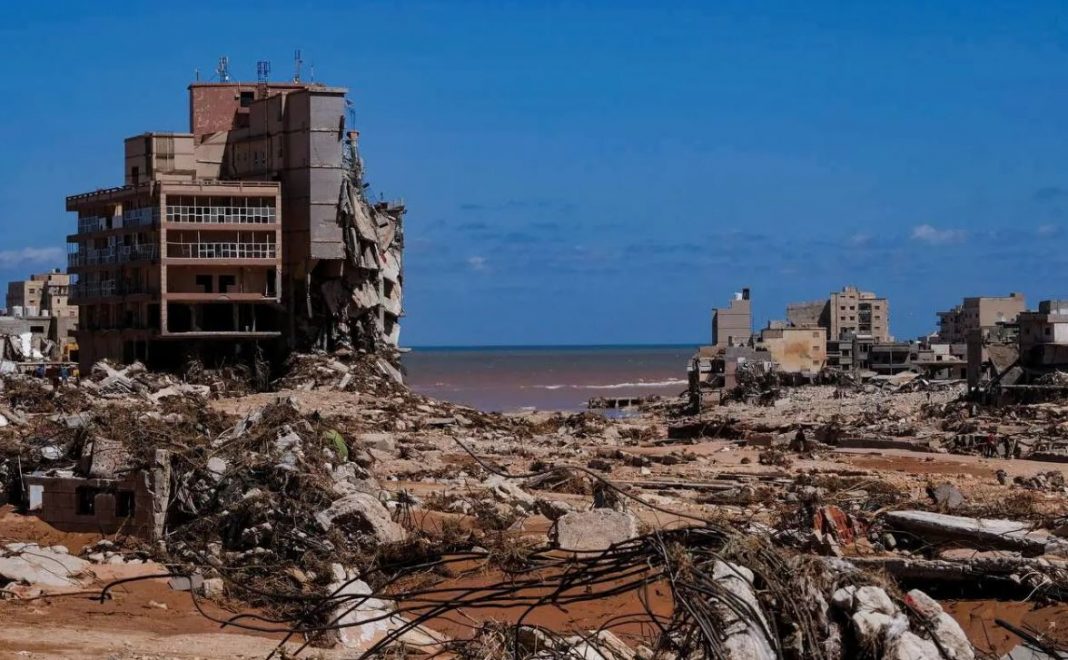Ruba Hatem Yassine, her pregnant sister, and many elder relatives climbed a neighbor’s ladder to the roof as two dams burst and storm floods ripped through the streets of the Libyan city of Derna, bringing corpses and structures with them.
Ms. Yassine, 24, described how they escaped by scrambling from rooftop to rooftop along their tight street two days after their terrible incident. After hours of watching the water rise over the city, they decided to take refuge in a tiny storage container on one of the roofs.
Ms. Yassine, calling by phone from a friend’s house in the adjacent town of Marj, described how they could hear their neighbours, trapped in half-destroyed homes by rising water or beneath debris, shouting, “Save us, save us.” Her family of nine had to take refuge on the roof until the floods abated enough for them to be rescued.
Libyan officials said on Wednesday that after disastrous floods hit the northeast of the nation, more than 10,000 people were missing.
Considering the amount of destroyed neighbourhoods, Mayor Abdulmenam Al-Ghaithi of Derna said Al Arabiya television that the dead toll might rise to 20,000.
Storm Daniel rushed over the Mediterranean Sea and pounded Libya’s shoreline, swiftly damaging badly maintained infrastructure. The North African country had been polarised by years of civil conflict and deep political and territorial divides.
There is a recognised government in the western half of the country located in the capital city of Tripoli, and an eastern half that is controlled independently. The Libyan National Army is the primary authority in Derna. Rescue and humanitarian attempts have been further hindered by the competing governments.
The eastern part of the nation finally started receiving much needed help on Wednesday. Roads and bridges have been damaged or destroyed, making it difficult to reach Derna, the Mediterranean coast city that has been affected the worst.
The dominant authority in the east, the Libyan National Army, had an official voice worries over the Qattara Dam, located close to Benghazi, many hours later. Both dams are operational, and the administration has issued a statement to reassure locals. However, the administration assured the public that it would construct water pumps to ease strain on the Jaza dam.
Tawfiq al-Shukri, a spokesman for the Libyan Red Crescent, a nonprofit aid group whose volunteers have helped evacuate residents and is leading the search-and-rescue efforts, said that rescue teams and some aid deliveries began reaching Derna on Monday despite the damaged roads that made passage more difficult and time-consuming.
Bashir Ben Amer, an aid worker with the International Rescue Committee in Libya, stated that the only access into Derna was from the south on an unpaved road since the western and eastern exits were impassable. This slowed the delivery of assistance and the arrival of rescue teams.
Wet weather have raised concerns that the city’s one operational route won’t be able to handle the influx of convoys, he said. More than 30,000 individuals in the city are now homeless, and many of them haven’t even attempted to leave, he claimed.
Climate change contributes to Mediterranean Sea storms, making Libya a particularly susceptible region. According to the United Nations, as the Mediterranean warms, the sea level rises and the water volume increases, eroding coastlines and contributing to floods. The majority of Libyans make their homes in vulnerable low-lying coastal locations.
The Tripolitan authorities said early Tuesday that shipments of supplies, including body bags and medical equipment, had departed for Benghazi. Early that day, a group of medical professionals and other rescue workers had driven to Benghazi.

